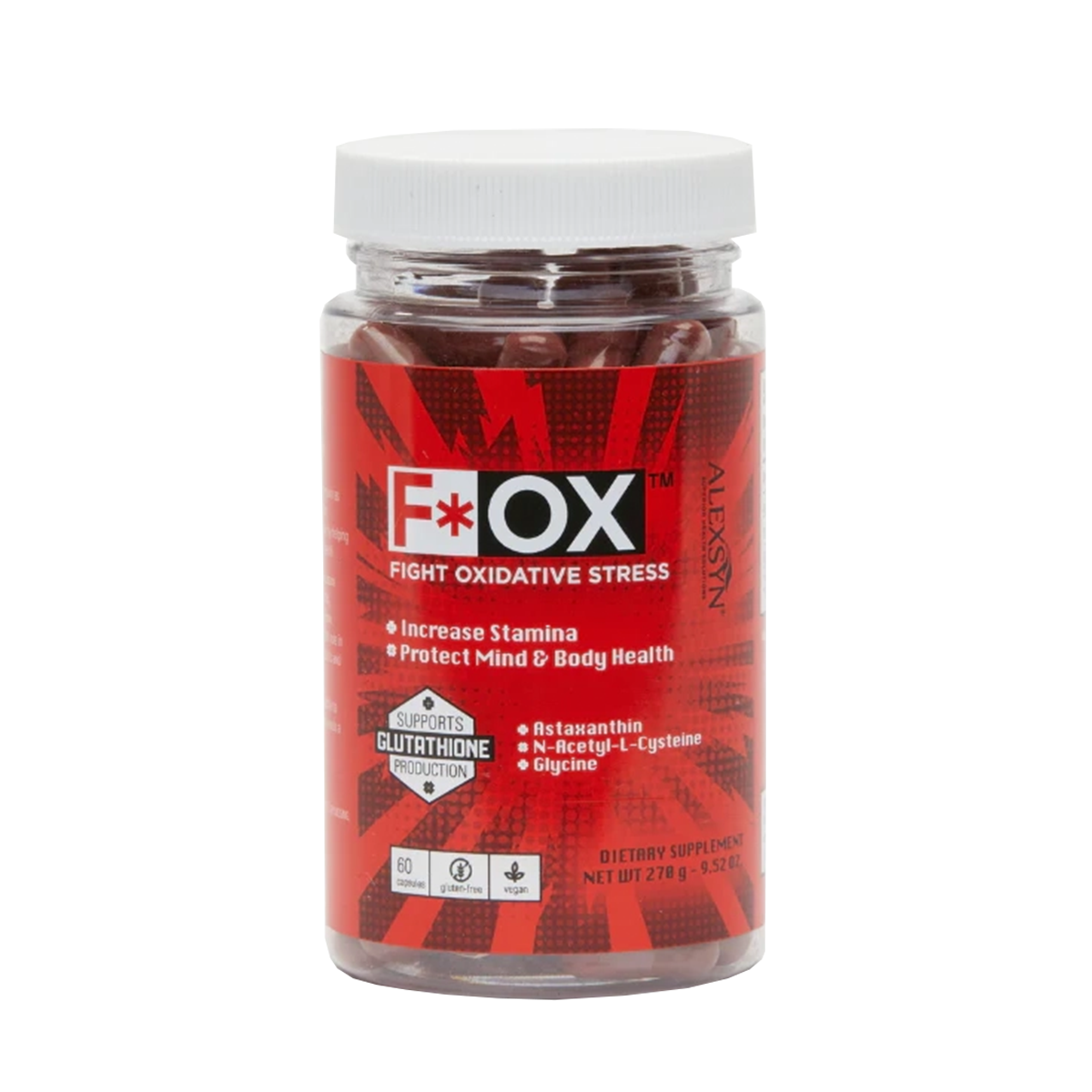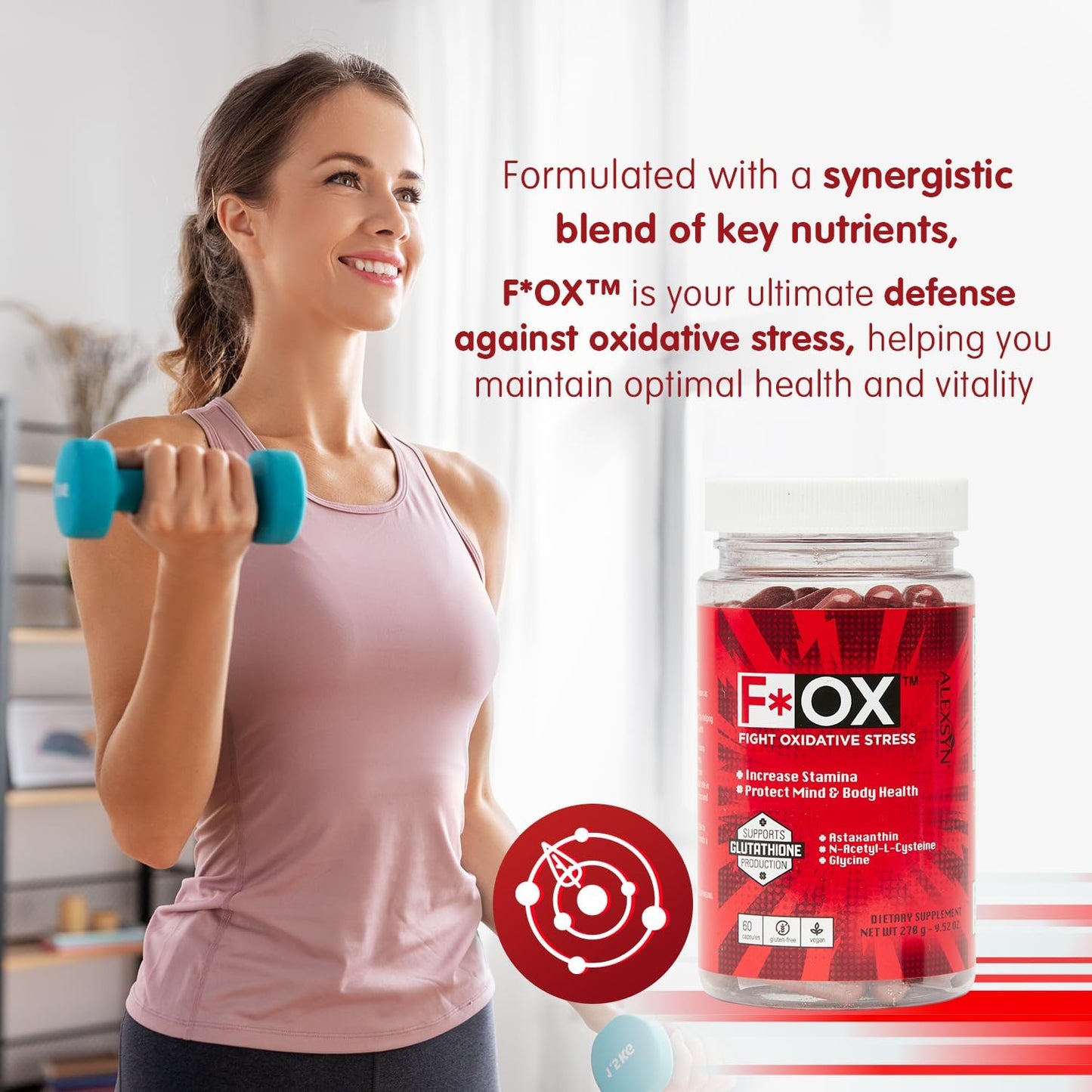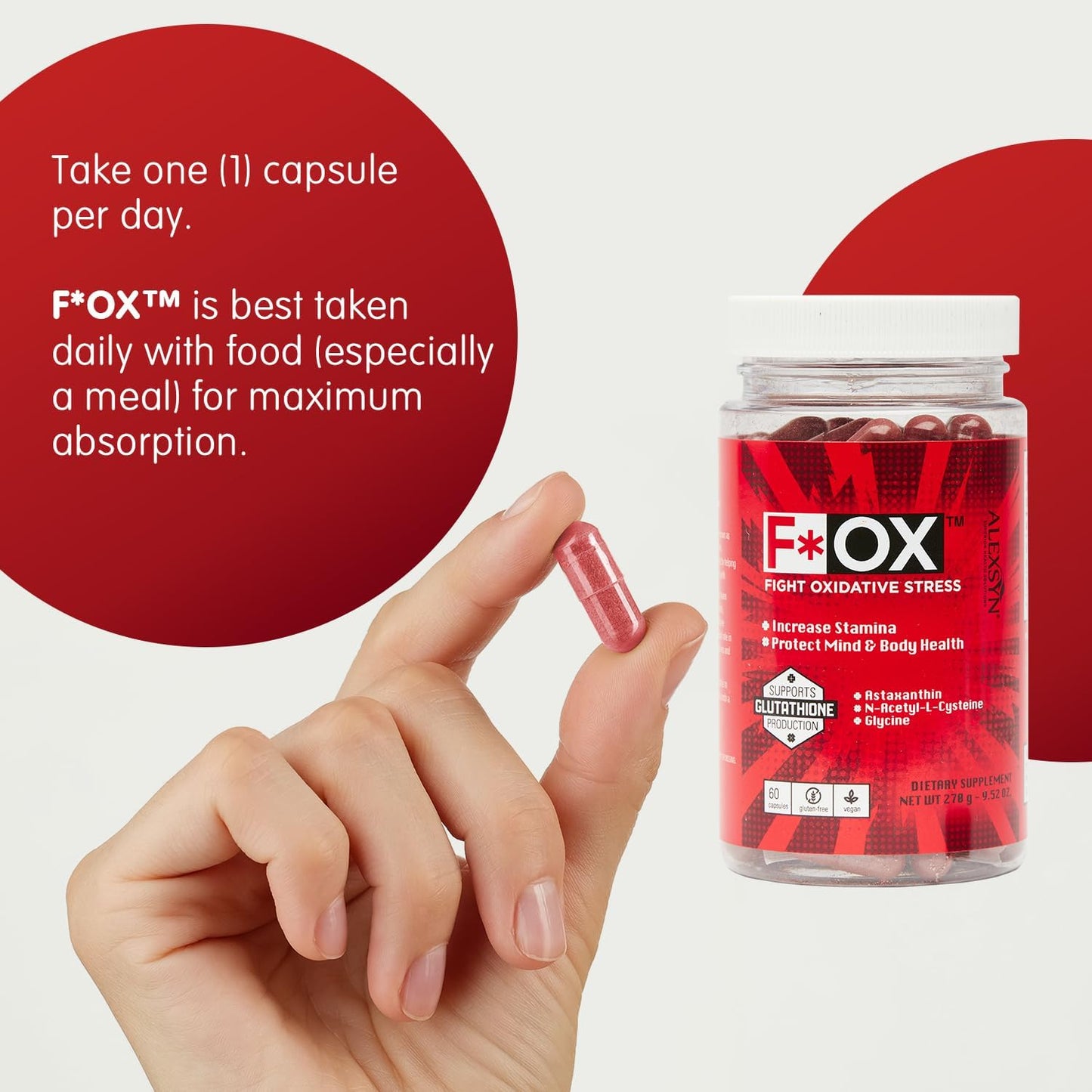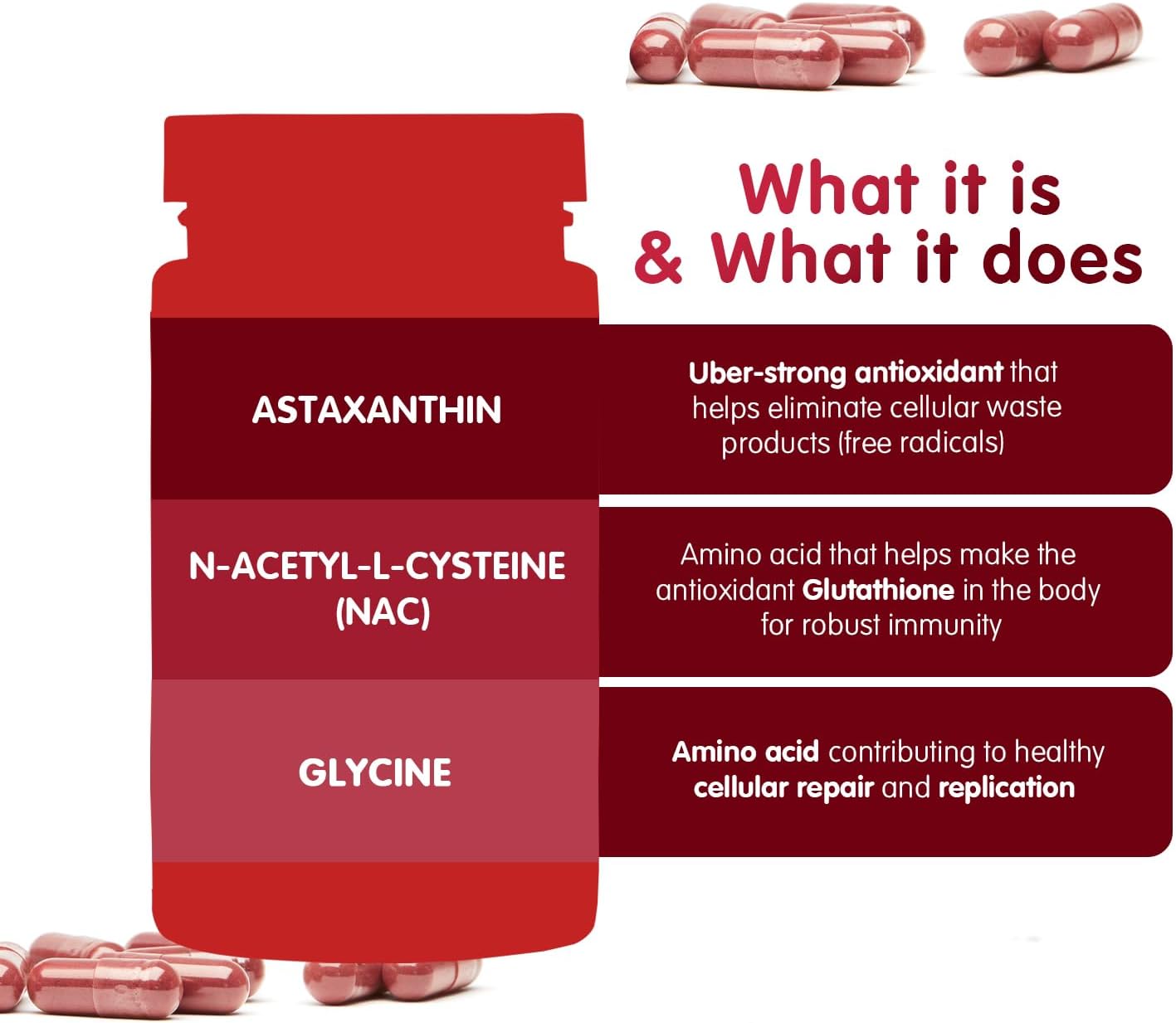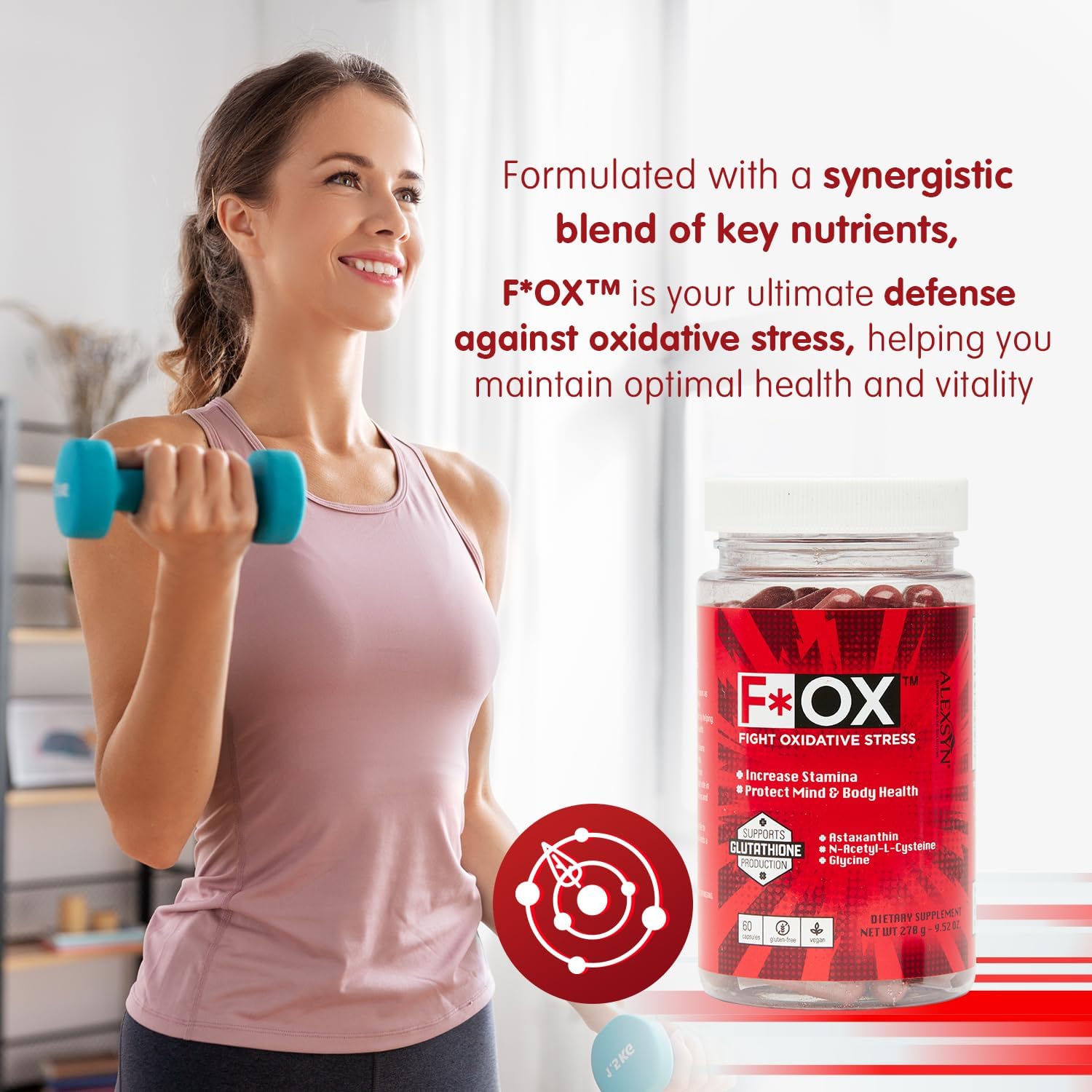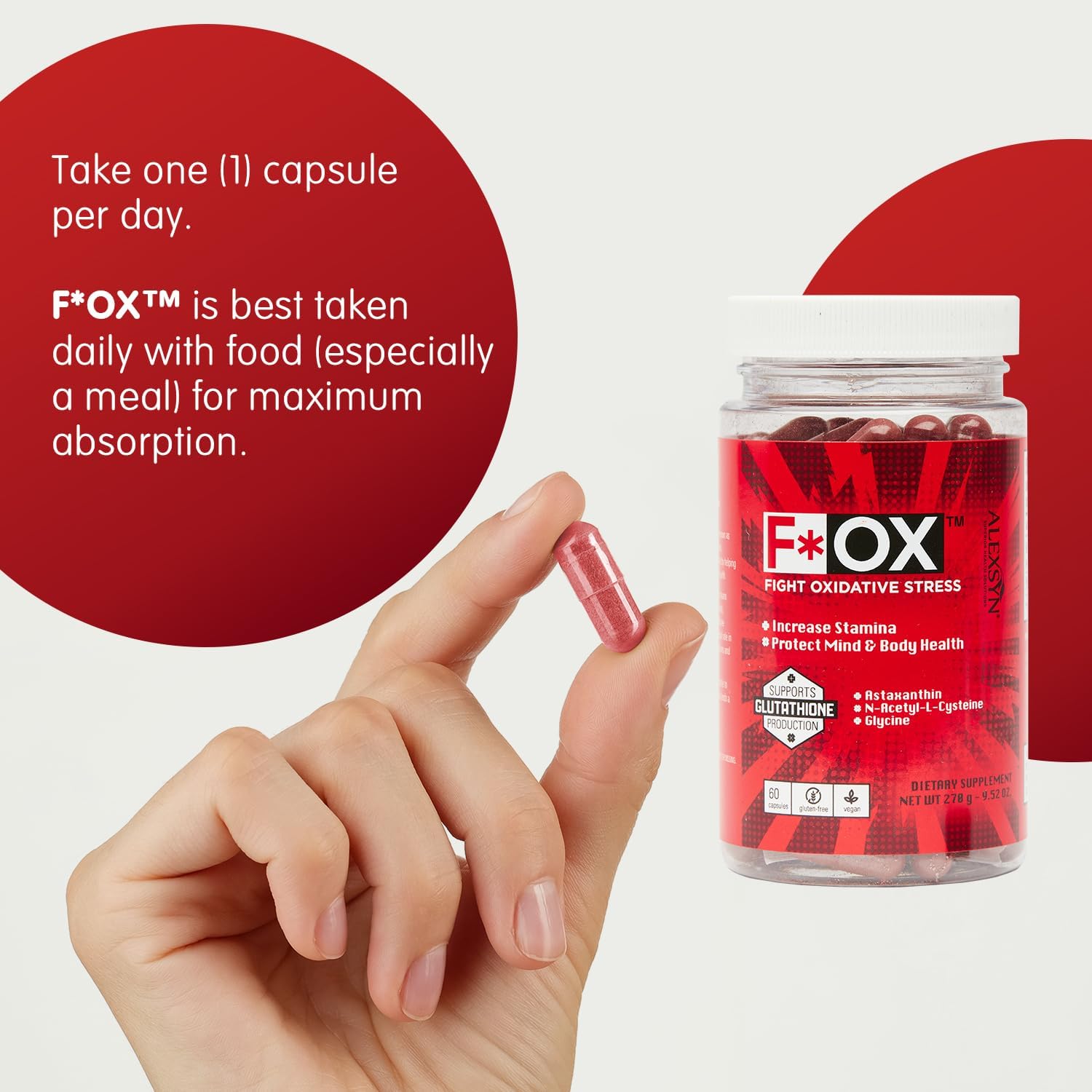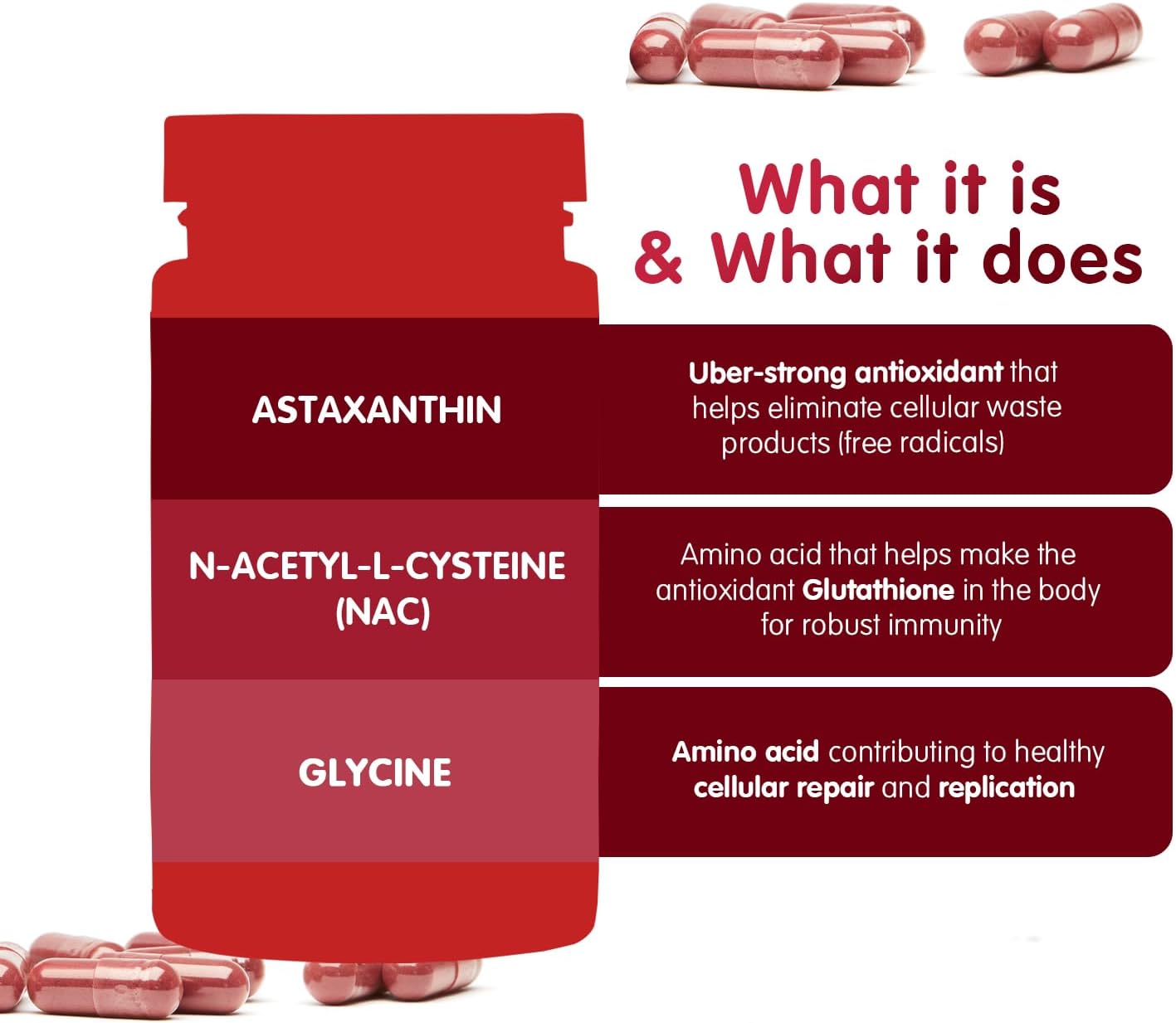F*OX™ Antioxidant Supplement
F*OX™ Antioxidant Supplement
Couldn't load pickup availability
F*OX™ is a daily antioxidant formula that helps defend against oxidative stress and supports healthy glutathione levels. Each serving pairs astaxanthin with N-acetylcysteine (NAC) and glycine—key building blocks your body uses to maintain its own antioxidant defenses.
What Is F*OX?
FIGHT OXIDATIVE STRESS
As you likely know, good health becomes a moving target as you age, so arm yourself with all the antioxidant support you can muster with F*OX™.
F*OX™ is for all of us, actually, from the young-ish to the young at heart! F*OX™ is a unique, triple-threat formula made to help support body and mind against free radical damage, and to help maintain mental sharpness and everyday stamina.
The F*OX™ Objective
- Defend the body against oxidative stress
- Restore and maintain healthy intracellular levels of glutathione
- Support the body’s natural detoxification processes
Key Ingredients (and what they do)
Suggested Use: Take two (2) capsules per day, preferably with a snack or small meal for maximum absorption.
Heading Off Oxidative Stress at the Pass with Weapons-Grade Ingredients
- Astaxanthin
- N-Acetyl-L-Cysteine (NAC)
- Glycine
Stay a step ahead of oxidative stress. Try F*OX™ today!
F*OX™. Victory is Yours.
How F*OX Supports Glutathione
By teaming up a powerful carotenoid with two amino acids, F*OX™ supports broad antioxidant defenses and healthy glutathione—your intracellular, do-all antioxidant. Because glutathione plays roles across many cellular functions, supporting normal levels can be an important part of everyday wellness.
As you probably already know, oxidative stress can take a toll on how you feel day-to-day. Maintaining strong antioxidant defenses helps you stay resilient through life’s normal physical and mental demands.
Still in the first blush of youth? Lucky you! F*OX™ can fit your routine, too. The compounds in F*OX™ are used to support recovery, stamina, and post-exercise comfort.
Frequently Asked Questions
Click on a question to expand the answer.
Oxidative stress describes an imbalance between antioxidants and oxidants (free radicals). It can be influenced by factors like stress, poor sleep, nutrition, and normal aging.
Astaxanthin is a lipid-soluble carotenoid found in microalgae and red-pigmented seafood. It supports broad antioxidant defenses.
NAC is a form of cysteine that the body uses to support natural glutathione production.
Glycine is an amino acid involved in many metabolic processes and pairs with cysteine and glutamate in glutathione synthesis.
Glutathione is a tripeptide (cysteine, glycine, glutamate) produced in the body. It’s central to cellular antioxidant defenses.
Your clinician can advise on appropriate testing and interpretation in the context of your health history.
Different antioxidants have different properties. Astaxanthin is lipid-soluble and complements water-soluble antioxidants like vitamin C.
Some choose precursors (like NAC and glycine) to support the body’s own glutathione production. Others prefer direct glutathione—talk with your clinician about your routine.
Take two capsules daily with food, or as directed on the label.
Share
